1849: Proto-Computers
During the Industrial Revolution in the early 1800s, technological advances were exceeding human mathematiciansā abilities. Set out to reduce human error and man-hours, English engineer Charles Babbage spent decades designing a machine that could perform mathematical functions. The machine was never produced during his lifetime, and it would be a century before programmable computers were developed.
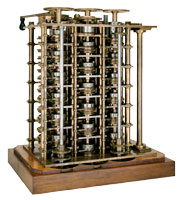
Difference Engine
Photo: CC BY-SA 2.0
1946: Early Computers
The first electric computers were the British Bombe, developed by Alan Turing during World War II to crack German Enigma codes. These inspired the construction of the Electronic Numerical Integrator and Computer, unveiled by engineers at the University of Pennsylvania in 1946. The ENIAC was heralded as āa giant braināāit was 1,000 times faster than machines of its time, able to multiply 10-digit by 10-digit numbers 357 times per second. In its 10 years of operation, it was believed to have made more calculations than mankind had until that time.
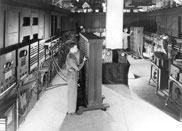
The ENIAC
Photo: U.S. Army
1959: Minicomputers
Requiring only one operator, the PDP-1 set a number of standards for emerging āminicomputersāāa class of smaller computers developed during the 1960s. It included a graphics display screen, and was the first with a word processor and programs for playing music. Most notably, it was used for playing the first computerized video game in history, SpaceWar! The computer system cost $120,000 (nearly $1 million today).
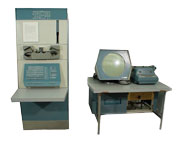
PDP-1
Photo: Computer History Museum
1977: Desktop Computers
Small enough to fit on a desk, easily operable with the use of a keyboard and mouse, and floppy disks and compact discs used to transfer data, desktops became the predominate type of personal computer (PC) in American homes during the 1980s to early 2000s.
Though not the first of its kind, the Apple II was the first to gain popularity. Millions of Apple II computers were given to public schools in the 1980s, introducing an entire generation to PCs.
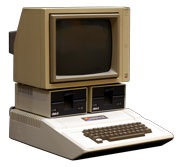
Apple II
Photo: CC BY-SA 2.0
1985: Laptops
Battery-powered portable computers have existed since the late 1970s, yet they were initially produced for traveling businessmen, military personnel, and government officials. The first mass-marketed laptop, the Toshiba T1100, was released in 1985, but cost about $2,000 at the time. Windows 95, improved screen displays and cheaper costs, as well as the capability of wireless internet in 1999, helped laptops go mainstream. Since 2006, more laptops have been sold than desktops each year in the U.S.
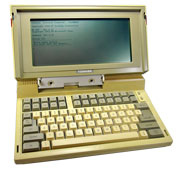
Toshiba T1100
Photo: CC BY-SA 3.0/Johann H. Addicks
2007: Smartphones and Tablets
Appleās iPhone was the first cellphone to include a web browser, music player, high-definition camera, built in GPS navigation, and a variety of applications that could be configured. The easy-to-use device popularized touch-screen interfaces, hence other portable devices such as the iPad and Amazon Kindle were developed and marketed around the time of the iPhone. There are now more than 2 billion smartphones globally.
One smartphone has more computing power than all of NASA did when it put men on the moon in 1969.
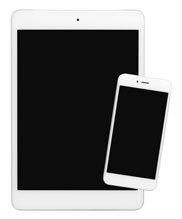
Apple iPhone
Photo: Getty Images
Present: Virtual and Augmented Reality
Virtual and augmented realityāin which video of the real-world environment is augmented by computer-generated sounds, visuals or GPS data (Pokemon Go was a recent example)āare being explored as the next chapter of computer technology. Some envision hands-free computers, similar to Google Glass, that allow users to incorporate them in any environment.

Photo: Getty Images























